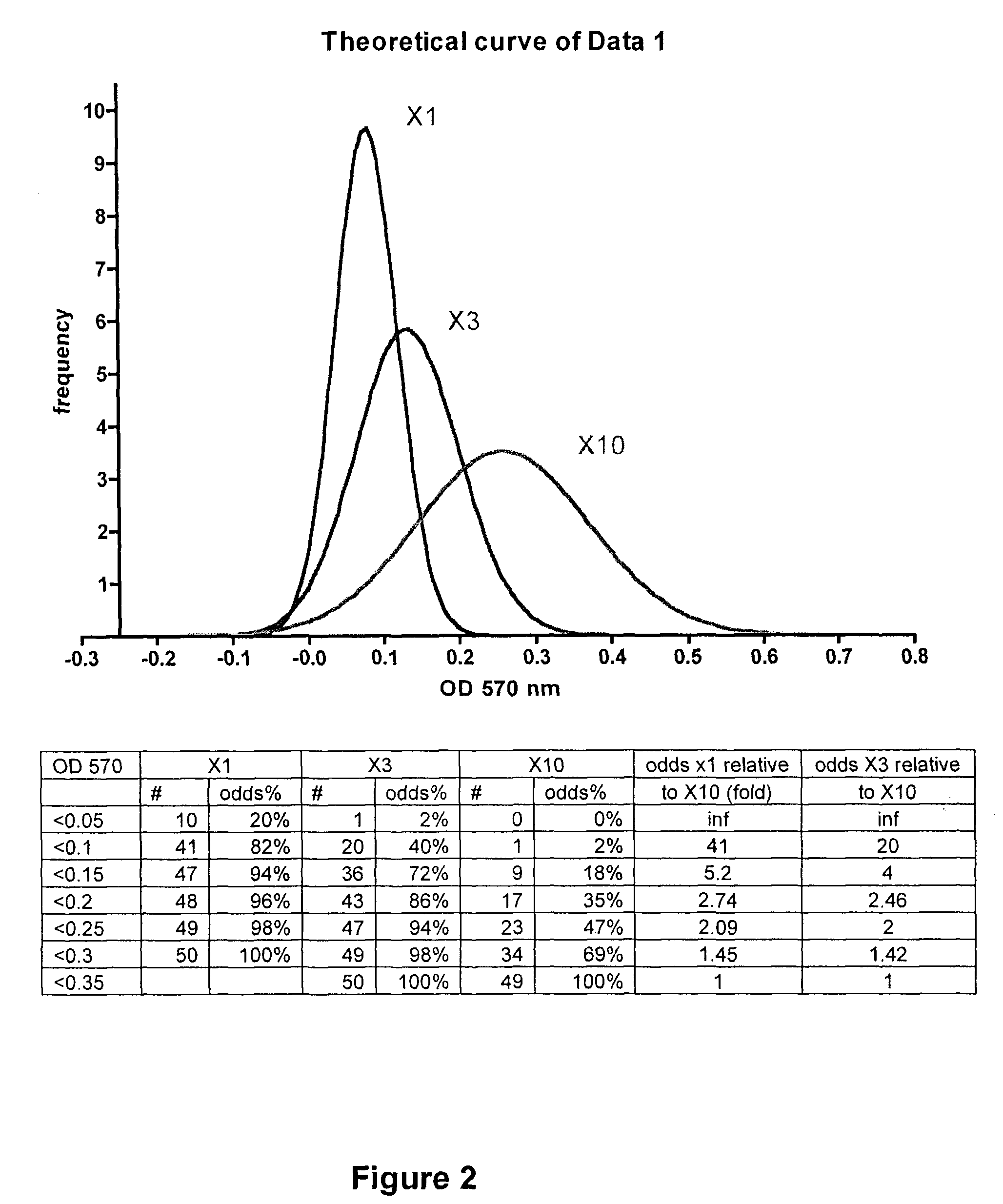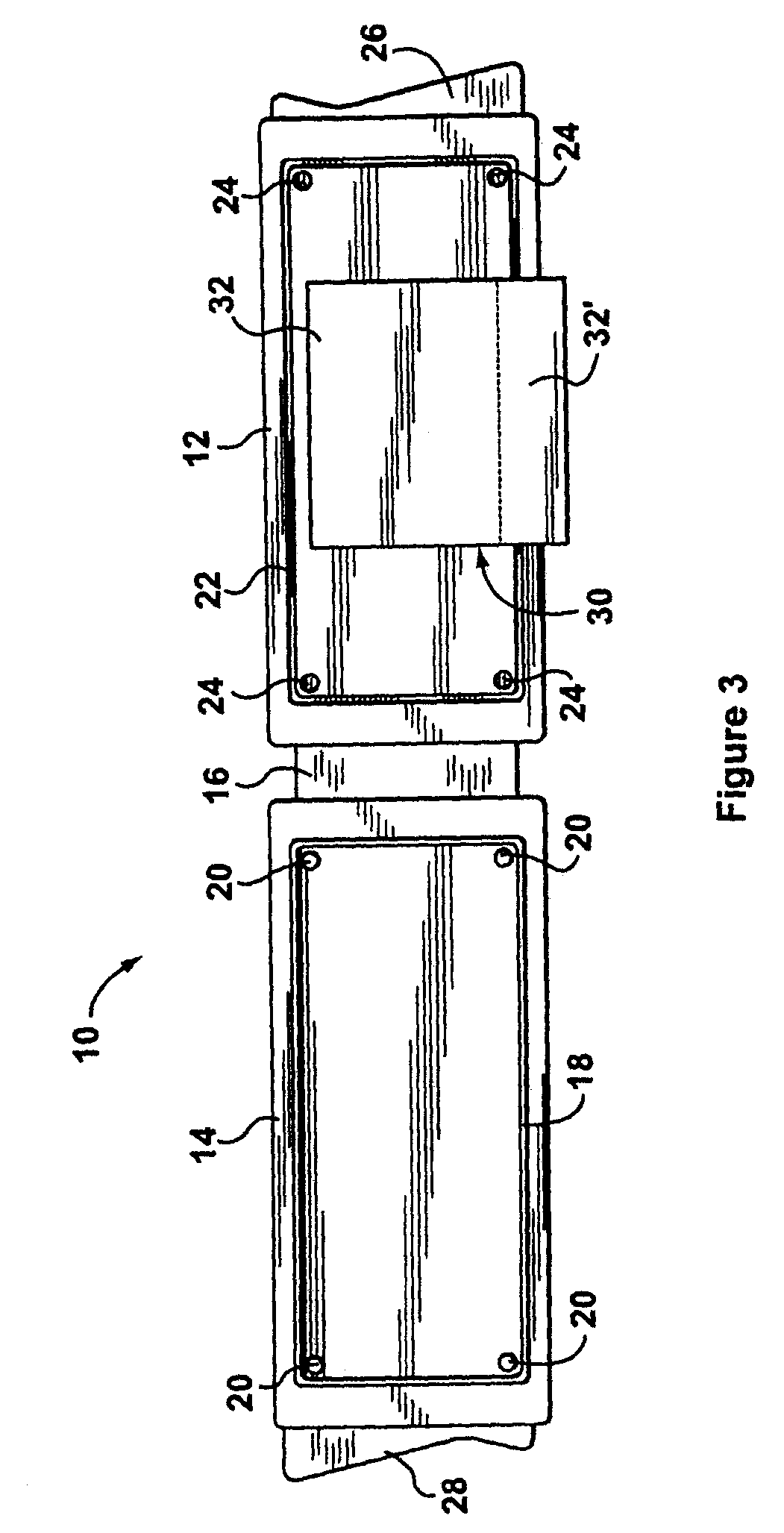Direct Assay of Skin Protein in Skin Samples Removed by Tape Stripping
a technology of skin protein and skin sample, which is applied in the field of direct assay of skin protein in skin samples removed by tape stripping, can solve the problems of unable to accurately predict the risk level of patients' total cholesterol levels, difficult to select the optimal method for discriminating individuals at risk, and morbidity and mortality, etc., to achieve high throughput processing, simple, cost-effective
- Summary
- Abstract
- Description
- Claims
- Application Information
AI Technical Summary
Benefits of technology
Problems solved by technology
Method used
Image
Examples
example
[0097]Aspects of the applicant's teachings may be further understood in light of the following example, which should not be construed as limiting the scope of the present teachings in any way.
[0098]Use was made of a sampling device as shown in FIG. 3. The sampling device, which is generally designated by reference numeral 10, is formed of plastic (polypropylene) and comprises a sampling member 12 connected to a closure member 14 by an integral hinge 16. The closure member 14 has a peripheral rim 18 and four pins 20, adapted to lock into, respectively, a peripheral groove 22 and four holes 24 formed in the sampling member 12. Folding the hinge 16 causes engagement of the rim 18 with the groove 22 and of the pins 20 with the holes 24, thereby ensuring that the two halves of the device 10 remain closed and sealed to prevent dust and contamination of the interior surfaces. The outer surface (not shown in FIGS. 3 and 4) of the closure member 14 has a flat area for receiving a label and b...
PUM
 Login to View More
Login to View More Abstract
Description
Claims
Application Information
 Login to View More
Login to View More - R&D
- Intellectual Property
- Life Sciences
- Materials
- Tech Scout
- Unparalleled Data Quality
- Higher Quality Content
- 60% Fewer Hallucinations
Browse by: Latest US Patents, China's latest patents, Technical Efficacy Thesaurus, Application Domain, Technology Topic, Popular Technical Reports.
© 2025 PatSnap. All rights reserved.Legal|Privacy policy|Modern Slavery Act Transparency Statement|Sitemap|About US| Contact US: help@patsnap.com



